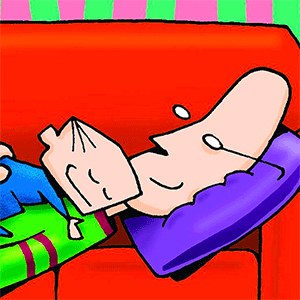Norwegian Christmas: A festival of light in darkness
I'm in Oslo, and it's the perfect winter scene -- a full moon arcs high overhead, ice-white holiday lights sparkle in the darkness -- and it's the middle of the afternoon! Norway, with its northern location, has the longest and darkest winters in Europe. It's also about the least church-going country in Europe. Maybe that's why Christmas in Norway feels more like a pagan festival revering light than a celebration of Jesus' birth.
In fact, the Norwegian word for Christmas, Jul (Yule), literally means "wheel," referring to the sun as it turns toward spring. Only in the 10th century did King Haakon I move the Jul winter-solstice, pagan, drinking festival to December 25 to honor the birth of Jesus.
Imagine the raucous time as medieval Norwegians celebrated the ebb of winter. Carnivores were in hog heaven, enjoying an abundance of fresh meat. Jul was the time when animals were slaughtered -- which made more sense in that subsistence economy than feeding them through the winter.
When the beer was brewed, the animals butchered, and the bread baked, the house was cleaned and the party began. People brought in enough wood to last the entire holiday. They gave the remaining animals a little extra hay and even lashed bundles of grain to posts outside to feed the birds.
After a big feast, the leftover food was not cleaned up, but was left out overnight for the little people. If you neglected your "nisse" -- those mischievous elves of the forest -- ill fortune would hit your family.
Today, even though the Christmas season -- and its Advent concerts -- boost church attendance, you see almost no Christian elements in the holiday decorations. It's almost as if Christmas, timed centuries ago to coincide with the solstice celebration, has reverted back to its pre-Christian roots.
Christmas in Norway is a festival of light, seeming to promise longer days and the return of the sun. Norwegians miss the sun intensely, and they need a spirit boost during those weeks when noon feels like twilight and it's dark by 4 p.m.
In good, understated Norwegian fashion, houses are decorated only with white lights -- never colored -- in the windows. You'll see some traditional candles, but electric lights posing as candles are more common. A plastic Santa or manger scene on the lawn, or garish colored lights along the eaves would probably put you in the neighborhood doghouse. It makes sense in a land that seems to have organized itself beyond a need for God.
A highlight of the season is December 13, the feast day of Santa Lucia. She was a fourth-century Sicilian woman who (according to the lore) wore a head wreath adorned with candles to light the way as she helped persecuted Christians hiding in tunnels. The 13th was traditionally considered the longest night of the year. (Actually, the solstice on the 21st is the longest night, but the 13th is the day when the sun sets earliest at Norwegian latitudes.)
The Scandinavian version of the legend is that a young woman born of rich and noble parents -- dressed in a white gown with a red sash and wearing a crown of lingonberry twigs and blazing candles -- traveled from one farm to the next in the early morning on December 13. She carried a torch to light her way, bringing baked goods to each house, returning home by sunrise.
Today, Santa Lucia Day is celebrated in family gatherings, churches, schools, day-care centers, nursing homes, and hospitals. In comes a procession of girls, led by a young girl dressed as Saint Lucy (the "Lussibrud," or Lucy bride), with a white robe, a crown of lights on her head, and a candle in her hand. The girls carry baskets of saffron buns or ginger cookies to hand out. They're delicious with steaming coffee.
If the ceremony is in a village church, the finale of the service is not "Silent Night" but "Santa Lucia" -- the same song popular in Italy but with Norwegian lyrics. As they sing, the children's choir with their leader wearing her crown of candles proceeds down the aisle and into the night, as if to spread light to the needy community.
One of my most heartwarming moments in Norway came when I enjoyed St. Lucia Day in a small-town senior center, which has housed widows and seniors for over 200 years. Kindergarteners paraded in, led by a tiny blonde Lucia wearing a crown of lights. The children carried the traditional saffron buns -- a treat that brought back distant childhood memories for the adults, and kicked off lifelong memories for these kids. Endearing rituals such as these ensure that traditions stay strong from generation to generation. Lucia, whose name means "light," symbolizes hope and emergence out of the darkness, and during winter's darkest days, this celebration lightens the hearts of all who experience it.
========
(Rick Steves (www.ricksteves.com) writes European travel guidebooks and hosts travel shows on public television and public radio. Email him at rick@ricksteves.com and follow his blog on Facebook.)
(c)2015 RICK STEVES DISTRIBUTED BY TRIBUNE MEDIA SERVICES, INC.






